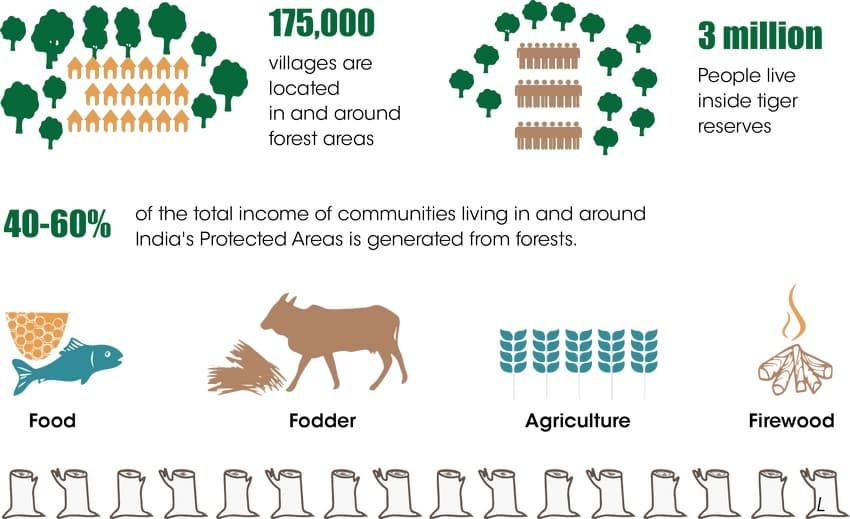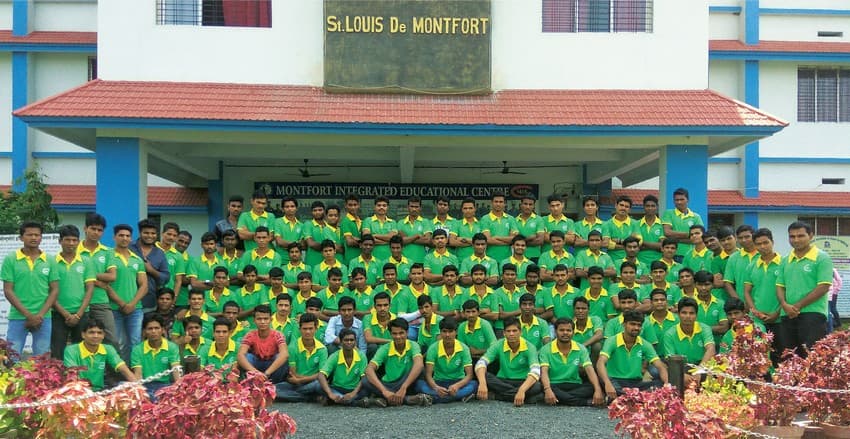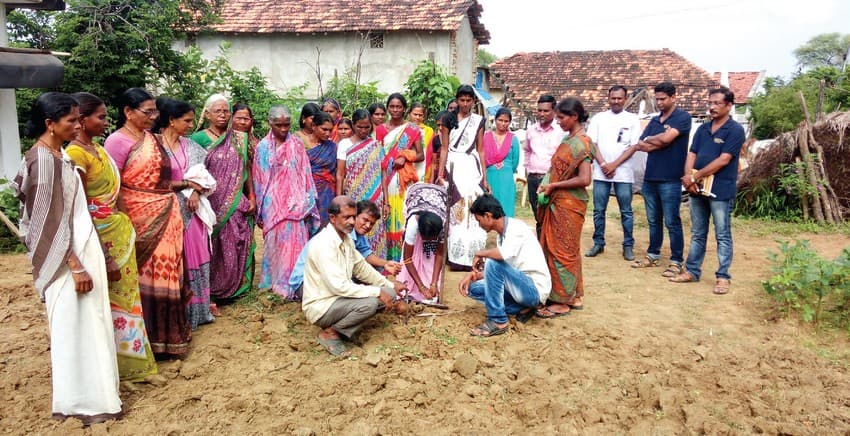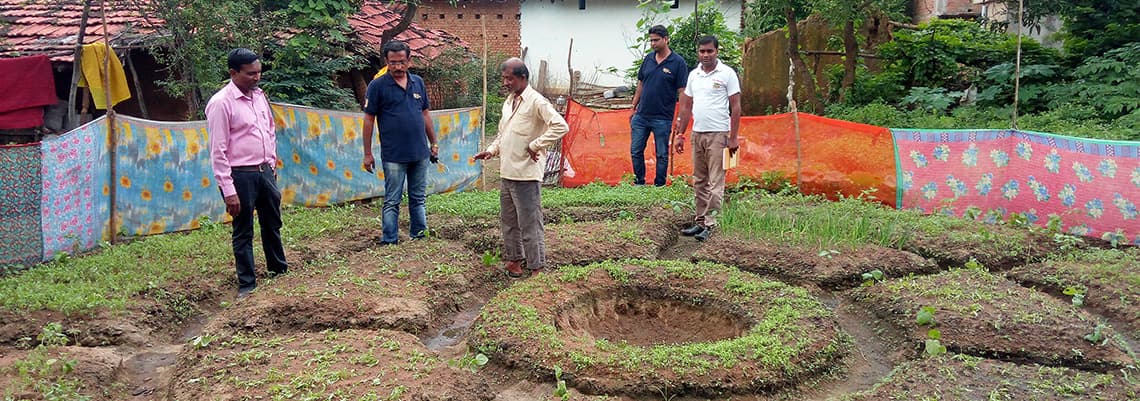A rapidly growing human population that depends on forests for its livelihood has contributed to the severe degradation of over 40% of India’s forests. Rural communities residing inside forests are important stakeholders in WCT’s conservation goals.
We have engaged with them in such a way that they are able to:
- Align with the conservation agenda
- Reduce their dependence on forests, while engaging in sustainable livelihood practices.

Vocational Training
WCT’s livelihood interventions engaged rural youth from remote forest villages and equipped them with employability skills through vocational training, connecting them with employers, and helping them to build gainful careers for themselves.
So far, WCT has supported more than 4,000 youths from over 550 villages situated in the buffer zones of 14 tiger reserves in 5 states.

Community-based Alternative Land Use System
Envisioned with an objective to urgently address water scarcity and initiate water conservation measures, the aim of this project has been to build a successful pilot which will result in large scale adoption by the end of the programme.
This project included technical analysis of the following:
- Water:
- Potability analysis for 11 parameters.
- Hydro-geological analysis of watershed areas and examining existing water management structures for their functionality.
- GPS-supported water level monitoring for streams and open wells.
- Soil: Soil samples were examined for 24 parameters to assess soil health.
- Land Use: Satellite data and GIS analyses were done to study patterns in land use change. These were then corroborated with revenue records from local government functionaries.
- Agriculture practices and livelihood sources: Cultivation practices for crop rotation, mixed cropping, and fertilizer and pesticide usage were examined. Important supplementary livelihood options were also analysed.
These technical analyses helped to establish the status of natural resources in each village as a starting point to streamline all future propositions for sustainable livelihood options.
Grain Bank Project
Grain bank is a traditional system used by indigenous communities to tackle the vicious cycle of debt and poverty. In the context of buffer villages, in addition to addressing lean season food scarcity, grain banks serve as buffer food stock for dealing with food shortages caused by crop depredation.
WCT has also incubated grain banks by contributing the initial required grain and transitioning their management to village committees.
Technical School Programme
Through the Technical School Programme, WCT has endeavoured to create opportunities for technical skill training in ashramshalas that children can leverage to build solid careers after schooling. Even if they do not seek to study further, the introduction to technical skills in school makes them semi-skilled early on. If they are compelled to make a living after matriculation, they can choose not to be casual labourers.

WCT has partnered with the Maharashtra government, corporates and other NGOs on the Village Social Transformation Programme in the Chandrapur district. We develop sustainable livelihood options for communities based on local resources, with a focus on agriculture and allied activities. In our endeavour to improve agricultural practices and entrepreneurship opportunities, we have adopted the following strategy:
- Understanding the developmental priorities of communities, especially with respect to livelihoods
- Coordinating with and providing technical guidance to the Chief Minister’s Rural Development Fellows
- Promoting and motivating farmers to adopt best agriculture practices through exposure visits and capacity building programmes
- Encouraging group farming and women self-help groups
- Providing alternative livelihoods to youth through skill development
Related Links
- Supporting Resettled Villages
- Village Social Transformation
- India’s rising tiger figures
- Parley with the Mind
- Focus on accurate means of wildlife tracking is the need of the hour: Anish Andheria

